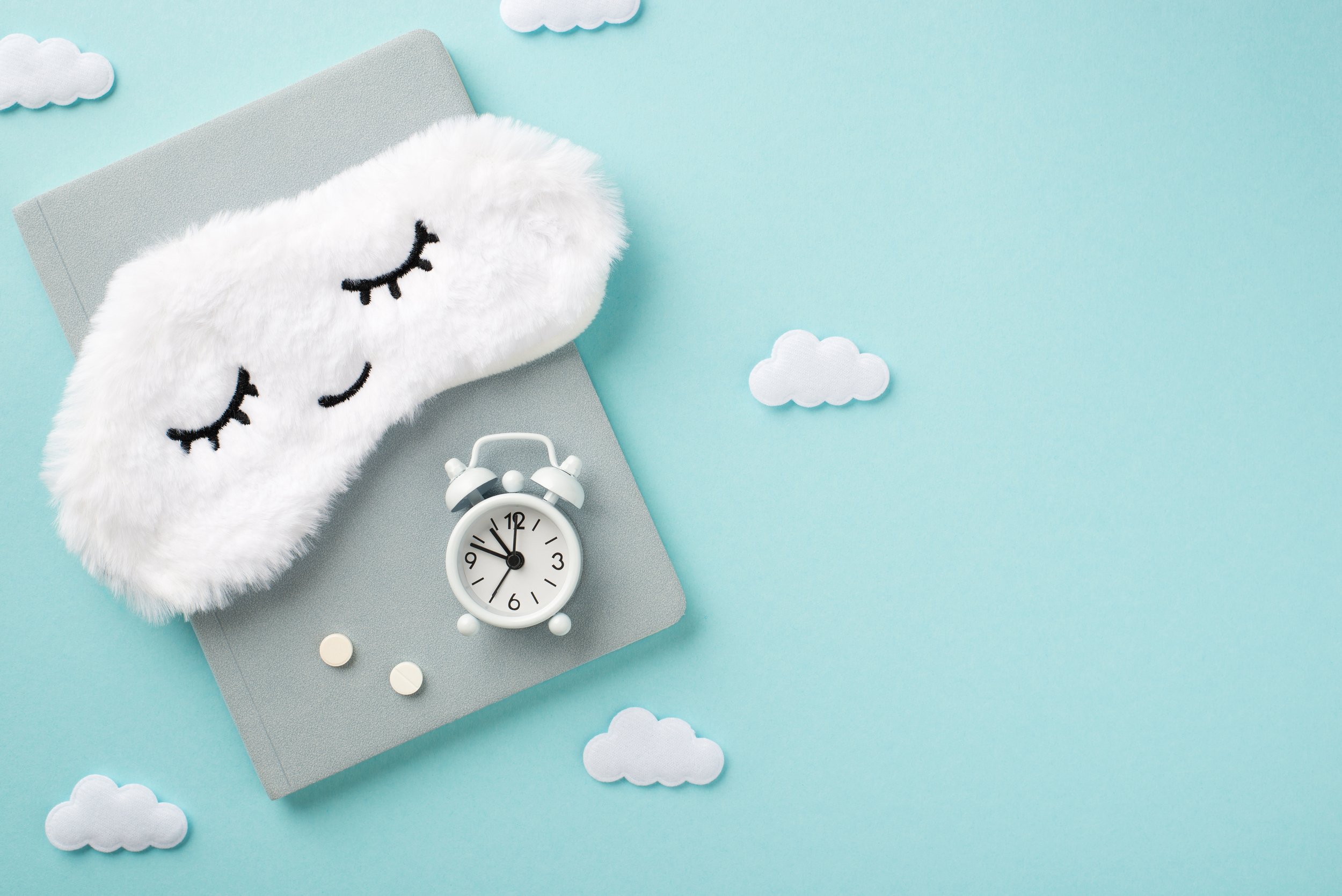The Humble Sleep Diary
In clinical practice, when patients or parents complain of sleep problems, they will commonly tell you about last night and/or the worst night. The problem is that you are not getting information about “typical” nights or “most” nights.
So how do you find out what is really going on with a child’s sleep? In this age of technology, I want to share with you the value of the humble daily sleep diary.
To assist clinicians with the diagnosis and treatment of behavioral sleep problems this blog will review the following:
What is a daily sleep diary and what can it measure?
What type of diary should you use?
A picture is worth 1000 words (clinical examples)
What Is a Daily Sleep Diary and What Can It Measure?
The daily sleep diary we are discussing today is a piece of paper where a patient/parent records their sleep-wake patterns. The sleep diary is typically free (other than the cost of printing it on paper), which makes it accessible. It also provides a wealth of information about behavioral sleep problems. In fact, you’ll see below that you can almost diagnose by diary. Here are other features of the daily sleep diary that make it ideal for use in clinical settings.
A Sleep Diary Is Prospective
As a prospective measure, the diary is completed every day for 1-2 weeks. This is in contrast to retrospective measures, like questionnaires or even clinical recall, that ask a person to think about the past week (or past month) and come up with a single value for something like bedtime or sleep duration.
For most people, it is not that hard to think about last night (or the worst night). But could you give me a single response for your bedtime or sleep duration over the past week? How about the past month? How about in general? Not so easy since there is usually some day-to-day variability, which can be important when diagnosing and treating sleep problems.
A Sleep Diary Is Subjective
When you ask someone to record their sleep-wake patterns, you are asking them to tell you what they think about their sleep. Studies in infants, children, and adolescents that compared sleep diaries to actigraphy (an objective measure of sleep-wake patterns) found good agreement for bedtimes and wake times, but not very good agreement for sleep quality, sleep onset latency or wake after sleep onset.
These differences have to do with movement, as actigraphy may underestimate sleep onset latency or wake after sleep onset for older children/adolescents who do not move a lot when trying to fall asleep or return to sleep. In younger children, who are known to move a lot during sleep, wake after sleep onset is often overestimated.
Notably, diary measured sleep was related to daytime sleepiness and fatigue in people with insomnia, but the same was not true for actigraphy! Thus, the subjective experience is very important.
Daily Sleep Diaries Measure Sleep-Wake Patterns (plus more if you want!)
Daily sleep diaries are primarily used to capture sleep-wake patterns. Here are the most common variables measured:
Bedtime: The time a child tries to fall asleep
Sleep Onset Latency: How long it takes the child to fall asleep
Night Wakings: How often (frequency) or how long (duration) a child is awake during the night
Wake Time: The time a child wakes up in the morning to start the day
Naps: What time a nap starts and how long it lasts
The “plus more” could be anything you think is important to know about the child’s sleep-wake patterns and daytime functioning.
For young children, this could be how parents respond to night wakings.
For older children it could be anything atypical about the child’s sleep (e.g., sleepover, studying for an exam, illness).
If helping adolescents understand how their behavior impacts sleep, you can also track caffeine intake or the timing of exercise.
If your patient has chronic pain, you can capture pain ratings at bedtime and wake time.
Truly the possibilities are endless!
What Type of Diary Should You Use?
Although there are many different versions of sleep diaries, most fall into three main categories: graphical, tabular, and electronic.
Graphical Sleep Diary
The image above is one type of graphical sleep diary (you can also have each day be a vertical column). Graphical diaries ask the patient/parent to mark when the child tried to fall asleep, when the child woke up during the night, when the child woke up in the morning to start the day, and any naps. They are also asked to shade in when the child is actually sleeping.
While not as precise as the other two formats, I love using this type of sleep diary in a clinical setting because it provides a quick snapshot of the previous one to two weeks of sleep. Below I provide examples of how, with a single picture, this type of diary provides data for diagnosis, treatment planning, and monitoring of treatment outcomes.
Tabular Sleep Diary
A tabular sleep diary puts information about sleep-wake patterns in a table form. It allows for more precise reports of variables, which can then be used to calculate averages and ranges, as well as any other relevant information (e.g., sleep quality, caffeine, etc.)
The most common version is the Consensus Sleep Diary, a tabular diary created by an international panel of experts, with input from real patients. This type of diary is most commonly used for cognitive-behavioral therapy for insomnia (CBT-I). In my practice, I use this with adolescents to track their sleep, and then enter it into an Excel file that creates a graph of sleep-wake patterns to provide visual feedback to patients.
Electronic Sleep Diary
If you go to your favorite app store and search for a sleep diary, you will find plenty of options. Personally I have not recommended these for pediatric use, although your patients/parents may show up with data on their devices. And some data are better than no data, right?
A good sleep diary app would provide you with a clinician’s report, which is helpful. If not, the utility may be more limited.
So I’m still on the fence about using electronic sleep diaries in clinical practice. But I’m open to changing my mind if the right app is developed!
What About Wearables/Nearables?
There is certainly no shortage of consumer wearables/nearables (devices you place near the sleep surface to capture data). I think there are pros and cons to these devices.
Pros: Wearables/nearables collect a massive amount of data, and adherence is less of an issue since they typically require little (if any) input from the patient/parent. And as previously stated, some data are better than no data!
Cons: The cost of devices is prohibitive for many families, limiting accessibility. Similar to apps, extracting meaningful data can be challenging. Similar to actigraphy, these devices are good at capturing bedtime and wake time, but often over- or under-estimate sleep onset latency and wake after sleep onset. Finally, parents and patients can become obsessive about sleep data, which may cause unnecessary stress. For example, I’ve commonly heard from parents that their child was not getting the “right kind of sleep,” based solely on a wearable device. However, the child had no problems falling asleep, staying asleep, or waking up, and no daytime issues!
Bottom line: In a clinical setting I think wearables/nearables are useful as expensive sleep diaries. But I am hopeful that one day in the near future these devices will be more accessible for all patients, be validated for pediatric populations, and be easy to integrate into clinical practice (including EHRs)!
A Picture Is Worth 1,000 Words
As previously mentioned, I have found that you can basically diagnose by diagram with the humble sleep diary. Here are some case examples to show you what I mean.
Infant Night Wakings - Sleep Onset Association
A colleague once joked that the more writing on a sleep diary, the more behavioral the case. The example above is an infant who presented with the complaint of multiple night wakings. Immediately you can see from the mother’s notes that there were multiple and inconsistent responses to the child’s night wakings, being nursed, soothed, or brought to the parents’ bed. Although not stated on this diary, you can pretty much guess that this child is also being nursed and/or rocked to sleep at bedtime.
(For more information about infant night wakings and sleep onset associations, please check out this webinar, where I also discuss this case in more detail).
Preschooler with Bedtime Battles
This is pictorial representation of a sleep diary from a four-year-old whose parents complained of prolonged bedtime battles most nights. A simple glance at this diary tells you that on the days the child goes to daycare and naps, she does not fall asleep until 10:00 pm. But on weekends, she does not nap when home with the parents. then falls asleep at 8:00 pm.
Many children continue to need naps until the age of five years, and many daycares require nap/rest time. Yet naps alleviate homeostatic sleep pressure, making it more difficult for some young children to fall asleep at bedtime, resulting in a bedtime battle.
(Learn more about bedtime battles in toddlers and preschoolers in our upcoming free webinar).
School-Age Child with Daytime Sleepiness
This 8-year-old child presented with concerns about falling asleep in school. The diary data suggest she had a relatively consistent bedtime and wake time and about 10 hours of sleep per night.
With sufficient sleep duration and relatively consistent sleep-wake patterns, this diary suggests an underlying sleep disorder, such as obstructive sleep apnea.
Adolescent with Difficulties Falling Asleep and Waking Up
Finally, this adolescent presented with difficulties falling asleep and waking up on school days. To help differentiate between insomnia, delayed sleep-wake phase disorder, and insufficient sleep, he was asked to keep a diary for two weeks - the first during a school week and the second during the first week of winter break.
The pattern seen here shows the teen had a delayed sleep-wake phase, falling asleep quickly when he went to bed at 2:00 am. Because of his inability to fall asleep early on school days, combined with an early school start time most days, he was obtaining insufficient sleep duration during the school week, making it difficult to wake up on school days.
Final Thoughts
Daily sleep diaries can provide a wealth of information. They can help with differential diagnoses prior to or following the initial evaluation. When completed after providing treatment recommendations, diaries can help you monitor and problem solve with patients what is working and what might need to be changed.
Although digital devices can capture and report an unlimited amount of data, I still believe that this humble piece of paper is an essential tool for pediatric clinicians.
Want to learn more about pediatric sleep for your clinical practice? Nyxeos offers provider consultation, live webinars, and an on demand course. Or set up a free consultation to see how we can provide services that meet your needs.








